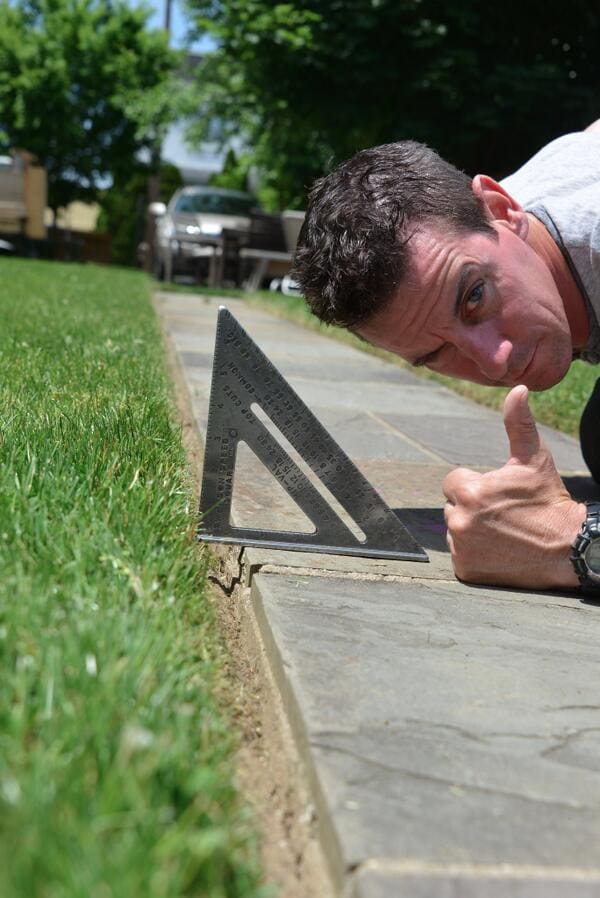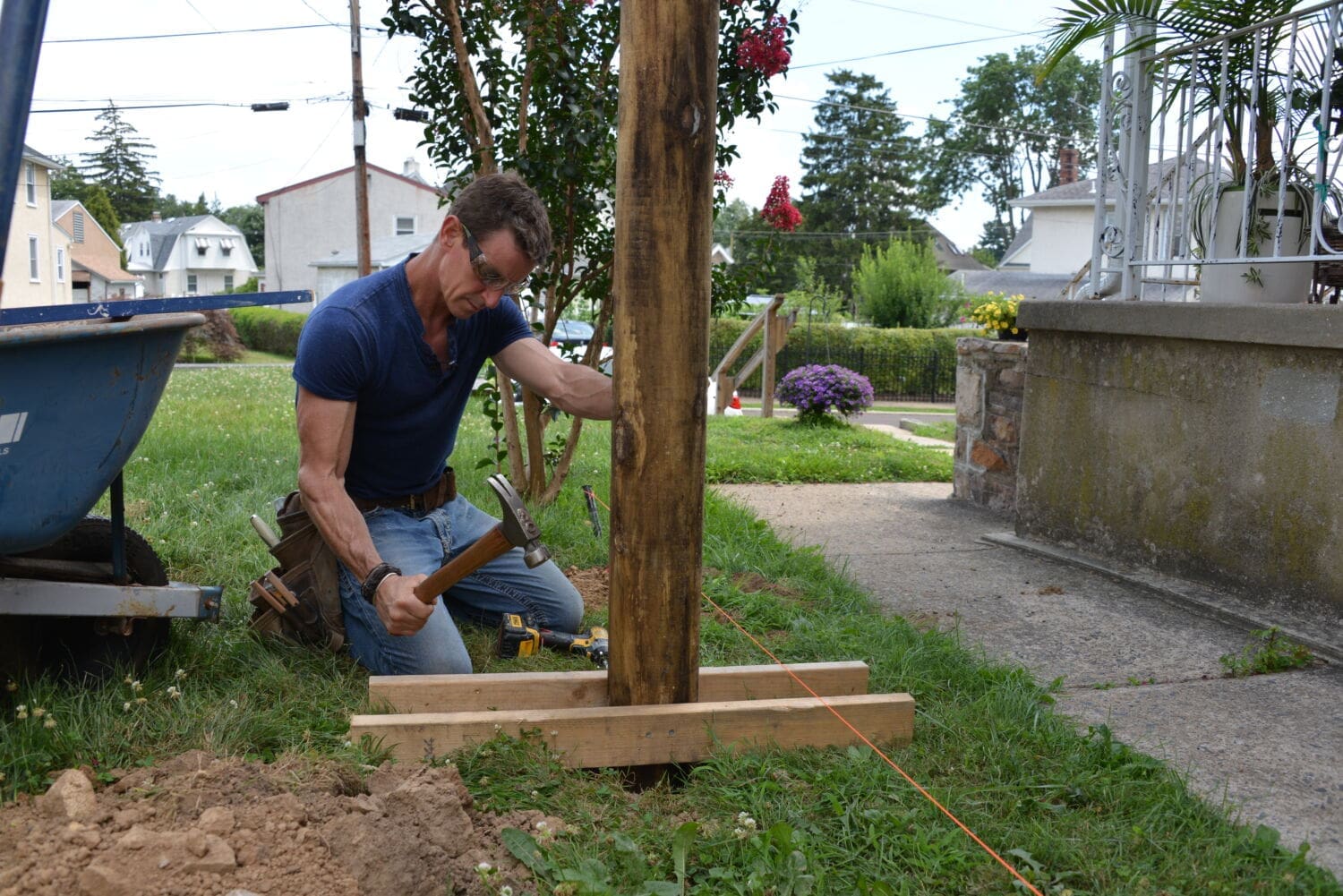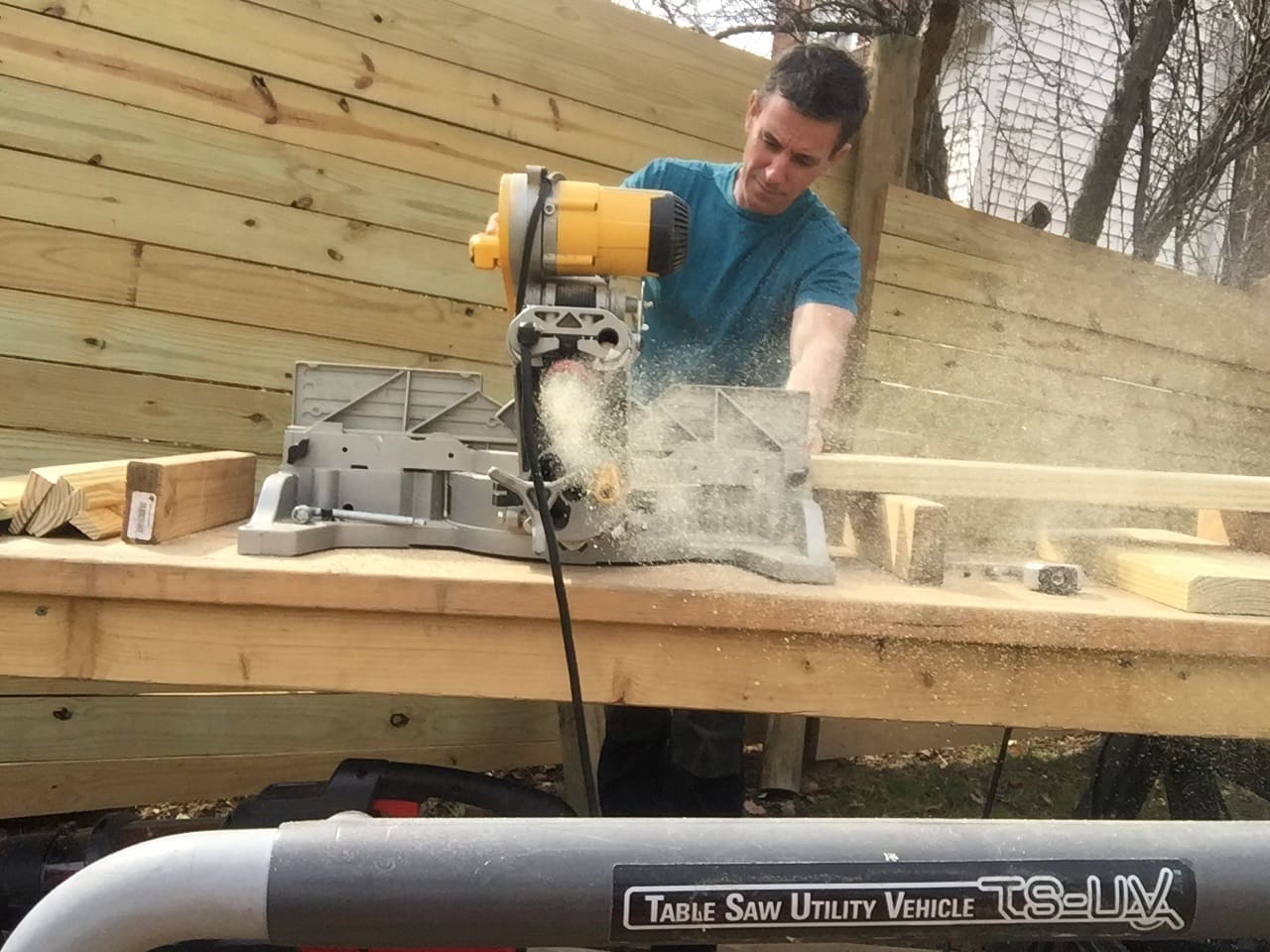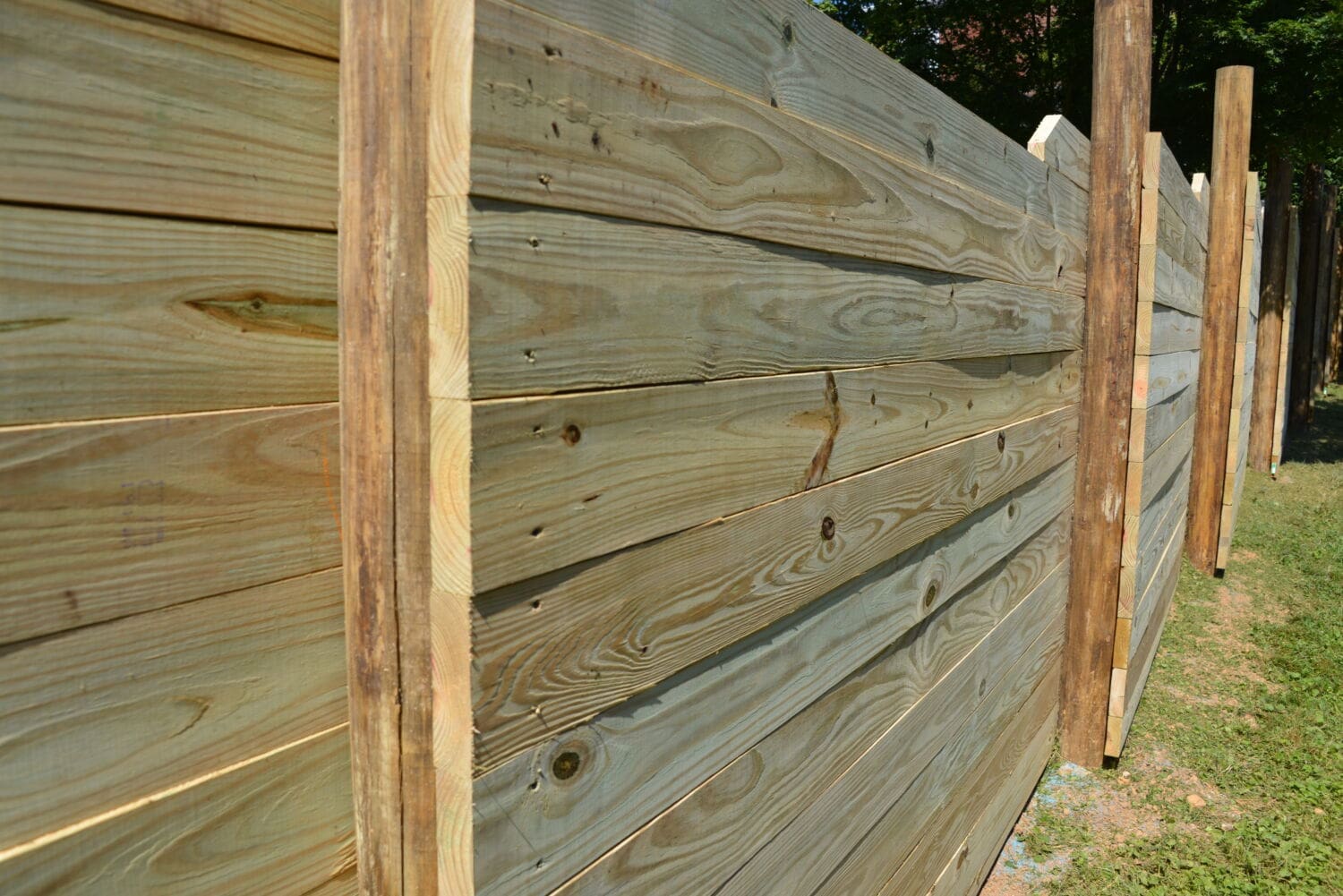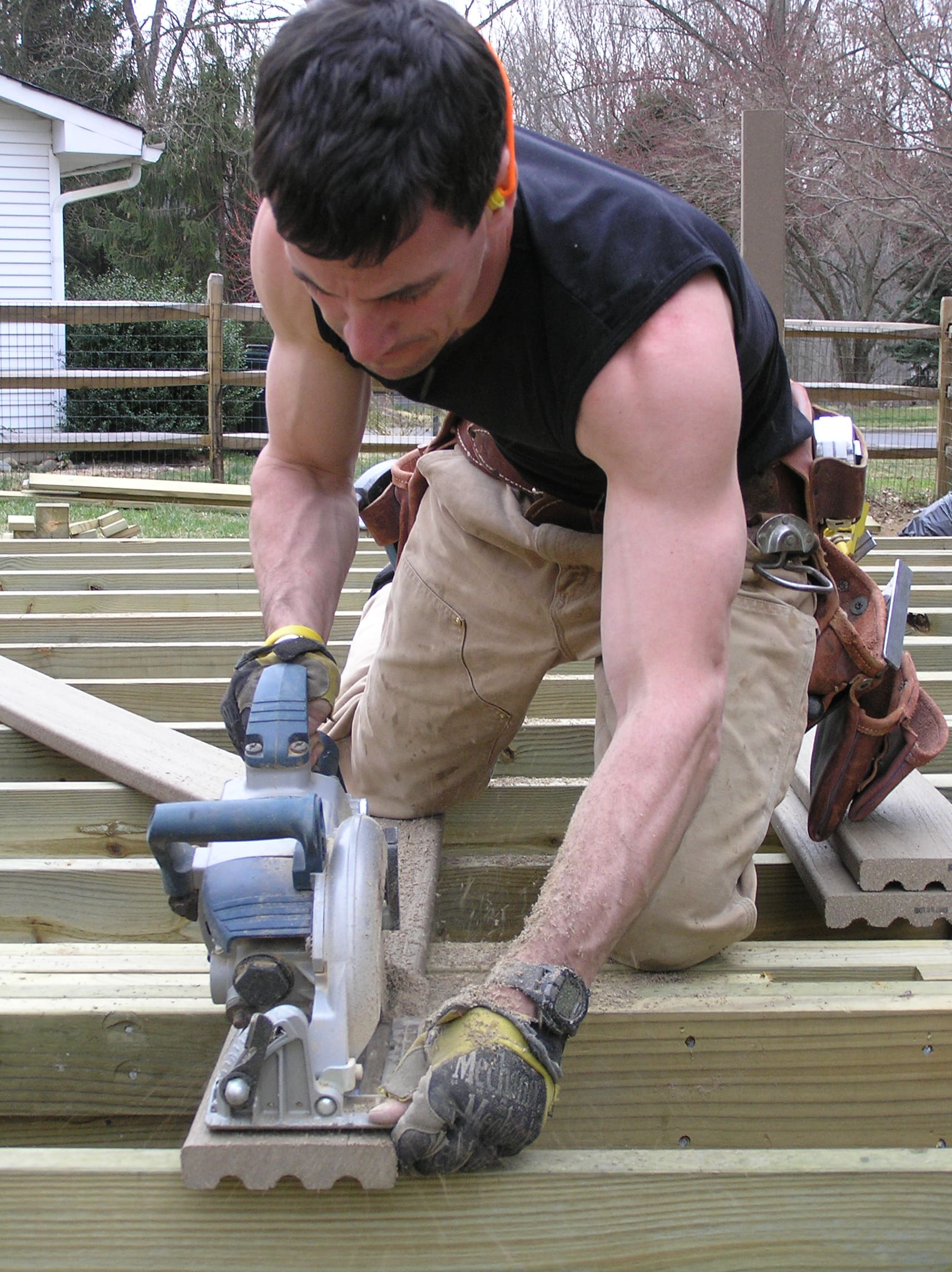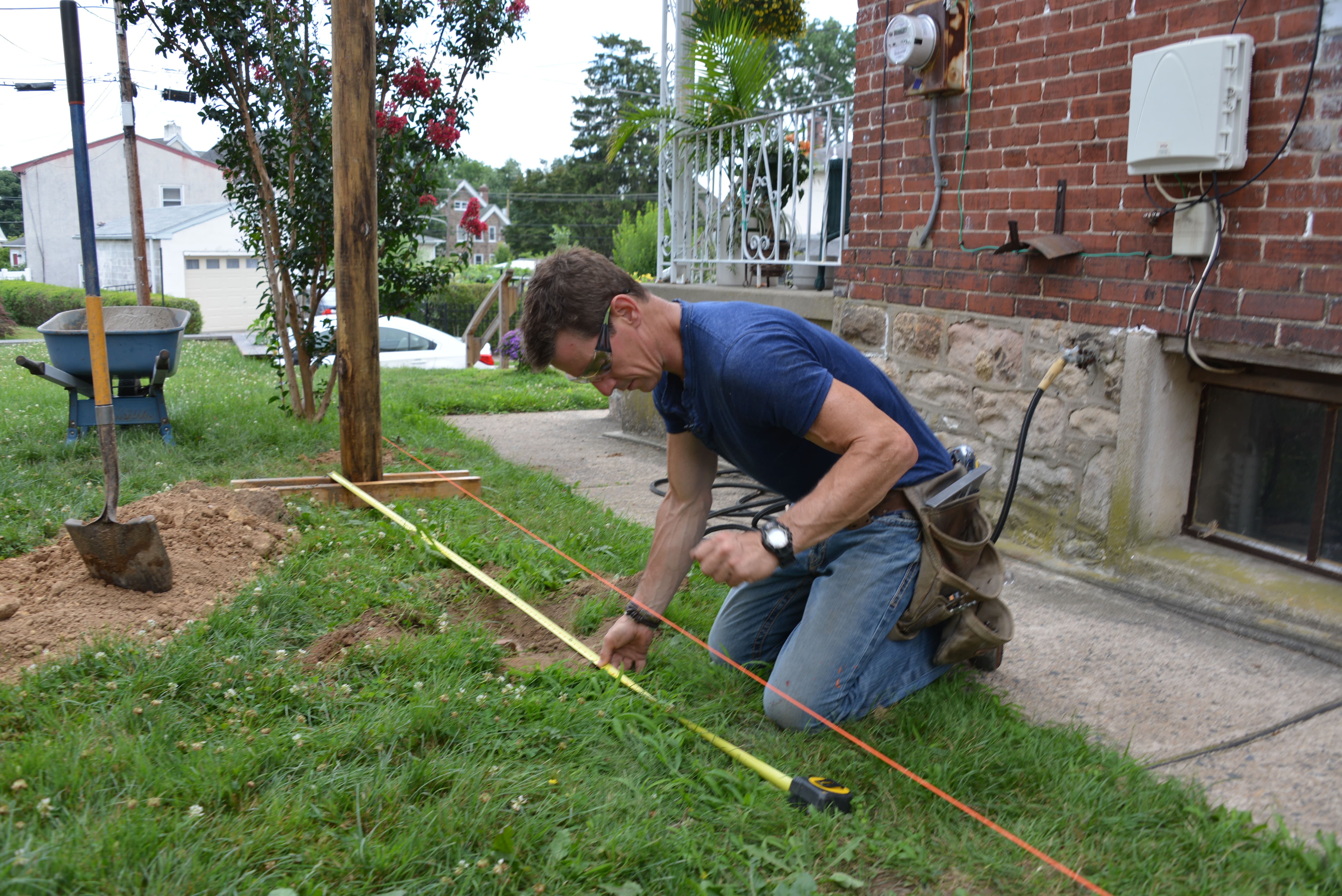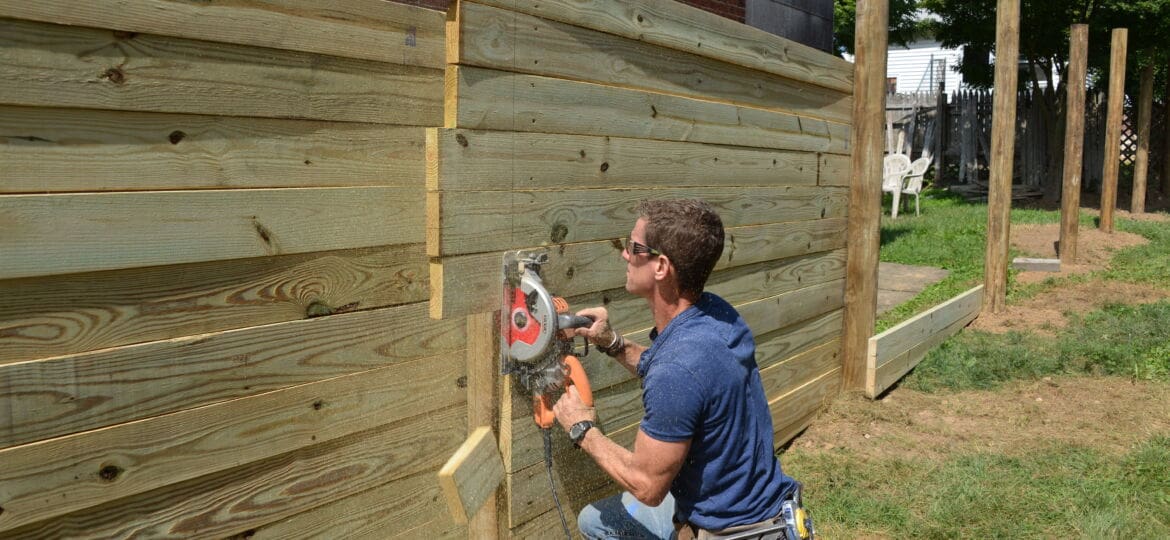
Building a wood fence is fun.
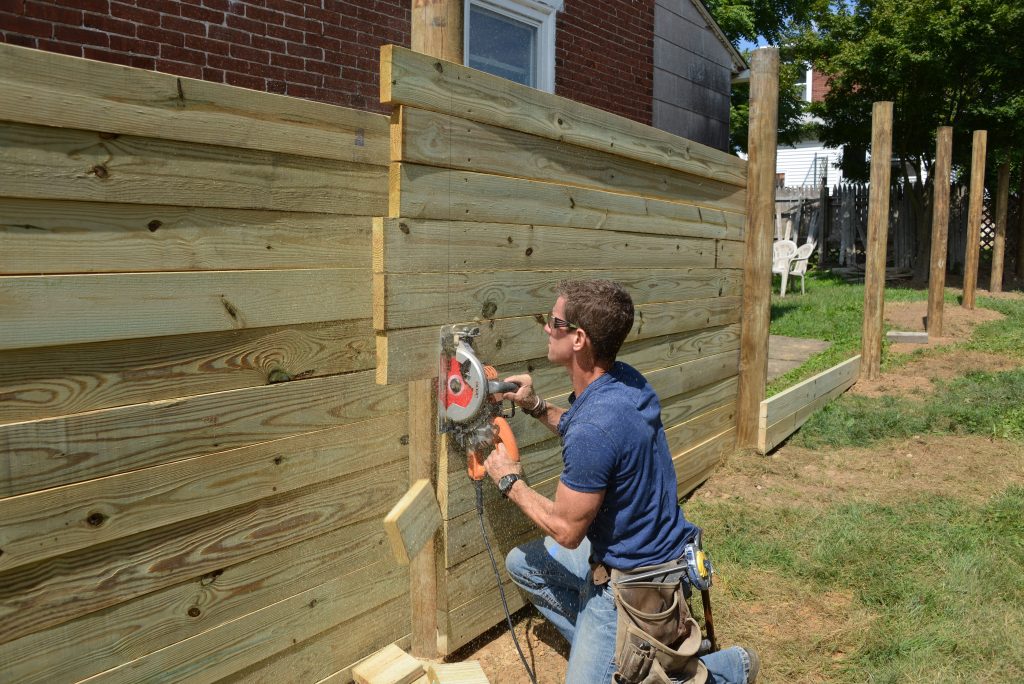
It’s work too, but it’s fun work. Rewarding. And from start to finish working with wood gives you the ability to customize your look, make a fence that’ll last, and be a joy for both you and your neighbors.
To make the whole process easier, I have a few techniques that help move things along.
Permit
There is no better DIY insurance policy than a building permit. Ask your local building department for help preparing the things you’ll need. Virtually every building inspector I’ve met wants your project to be a success; they’re there to help—and to make sure you don’t build it 6-inches on your neighbor’s property.
Tools
For hand-digging, I like a long-handled shovel and digging bar (along with some good work gloves if you don’t already have callused hands). Post hole diggers tend to be ‘all hat and no cowboy’ to me; they’re better suited for other projects. For tips on how to dig the actual hole, click here.
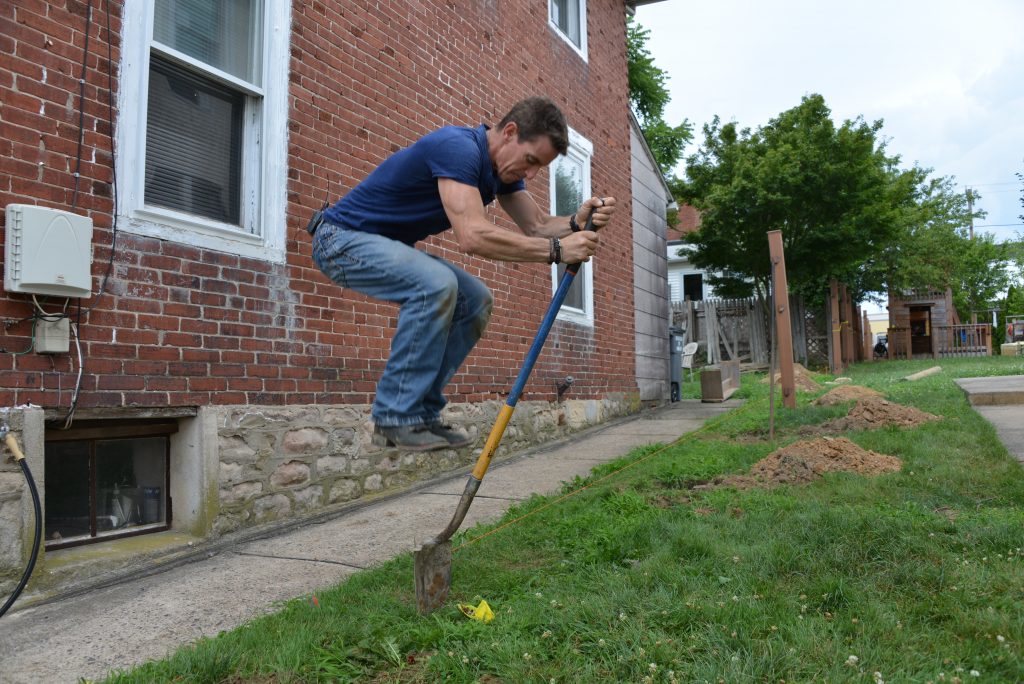
For lots and lots of holes renting a machine may be a better choice. A sub-compact tractor with auger will give you the digging power you need and can also be equipped with forks which are extremely helpful for transporting materials. They can. however, be tough on the landscape.
When there is an existing fence, as was the case on this project, it’s sometimes a fool’s errand to dig out the old posts. An alternative is to dig out around the posts below grade and cut them off with a reciprocating saw.
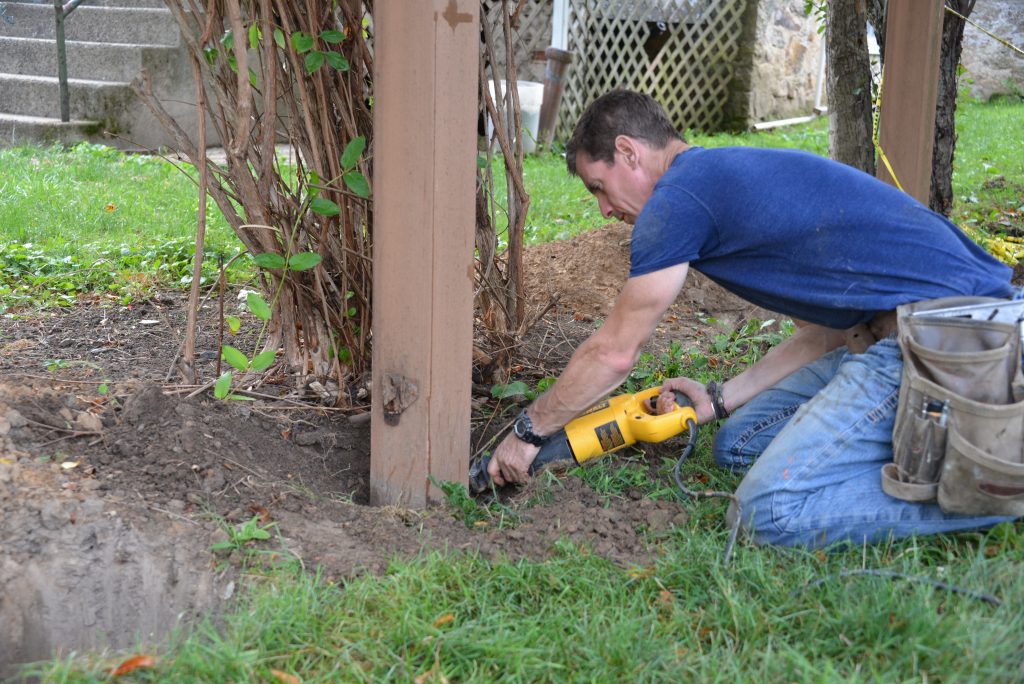
Layout
A straight fence is a happy fence. Building a wood fence that I love all starts with solidly set, proportionally located posts.
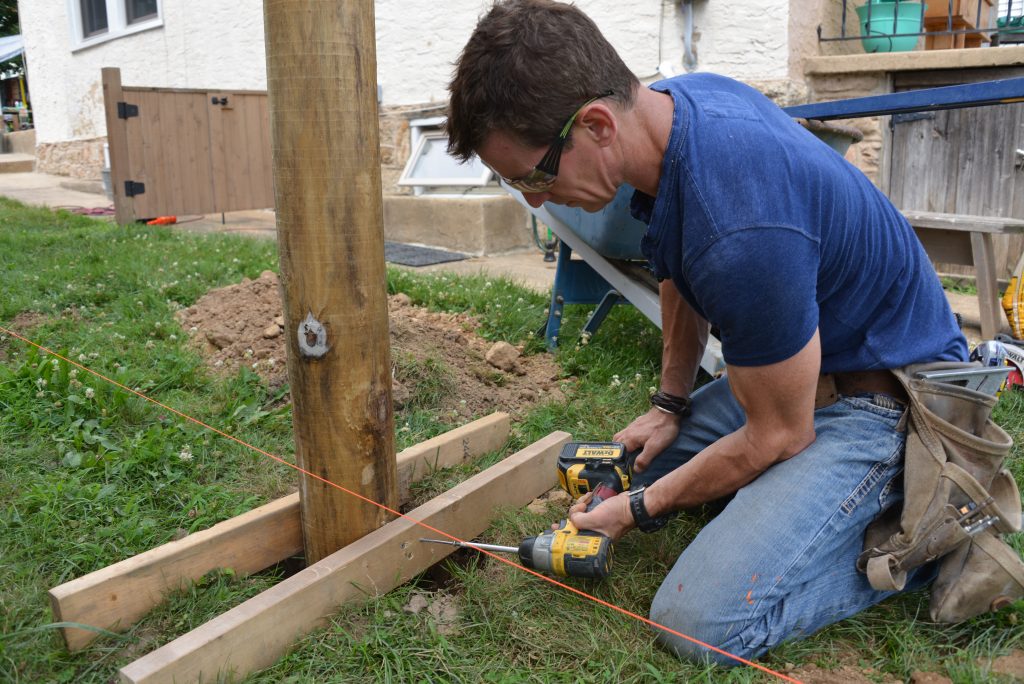
Carpentry
Fences come in a million and one flavors, including designs you create yourself, like this one. You can buy wood panels or make your own. I find it rewarding (and cost-effective) when building a wood fence to make my own design. This is something you can do with wood and not much else. Yet another reason I love working with natural wood.
Whatever kind of fence I’m building, I keep the bottom rails about 2-inches above the ground. I’m grateful that I do this in my own yard every time I can effortlessly trim the grass under the fence. Building officials like this too.
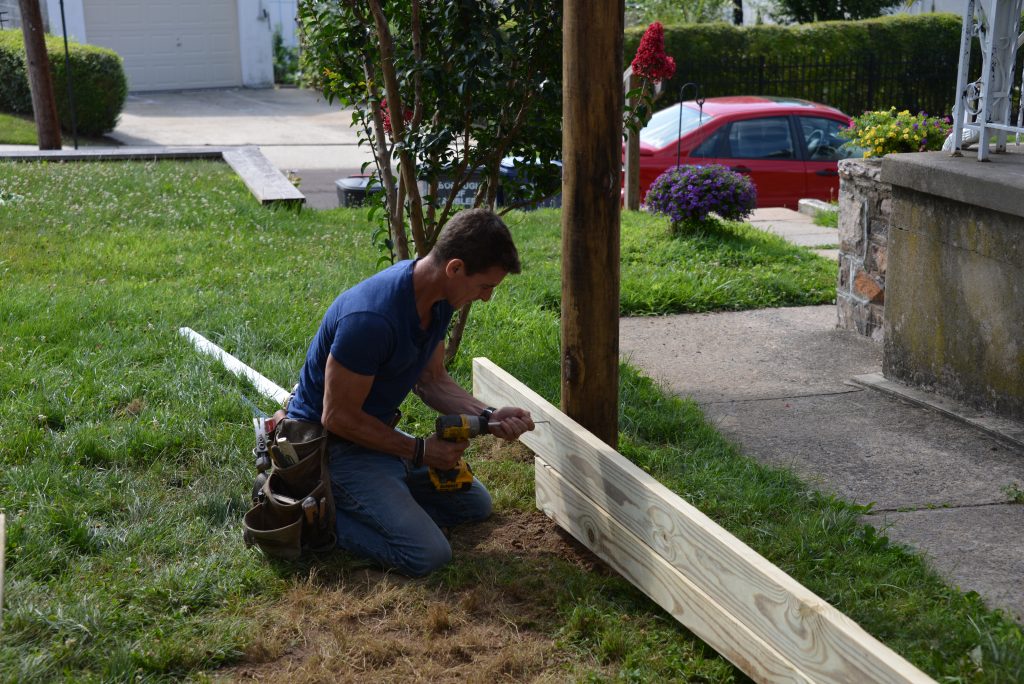
Landscaping
It is an age-old question for anyone who has dug a hole: Why do I have all this extra dirt left over?
When we dig up dirt, it fills with air. (Dweebs unite: It’s called ‘air-entrained’).
As I refill holes, I gently tamp the dirt down into the hole with the head of a sledgehammer every six inches or so. This packs it down and squishes the air out of it. Hit too hard and the post may move. Tamp, don’t destroy.
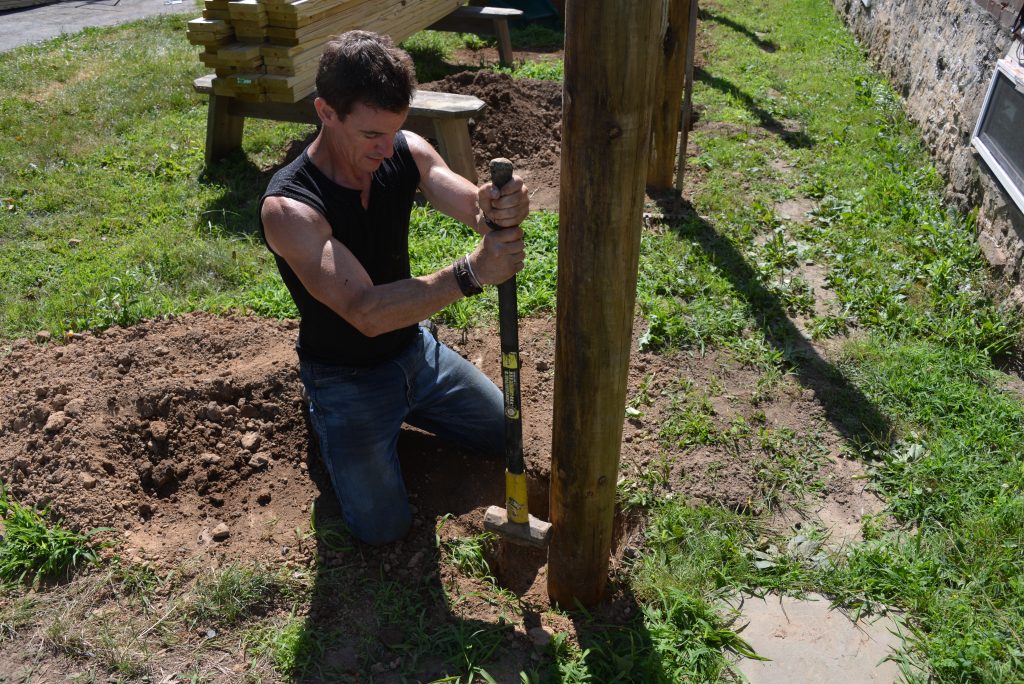
For left over dirt, I use it to freshen up garden beds and do lawn repairs.
For repairing the grass around the new fence posts, I re-seed. Since there is no such thing as magic grass seed, it’s important to water gently—without flooding the seed—every day until the new seed pops and is growing on its own.


